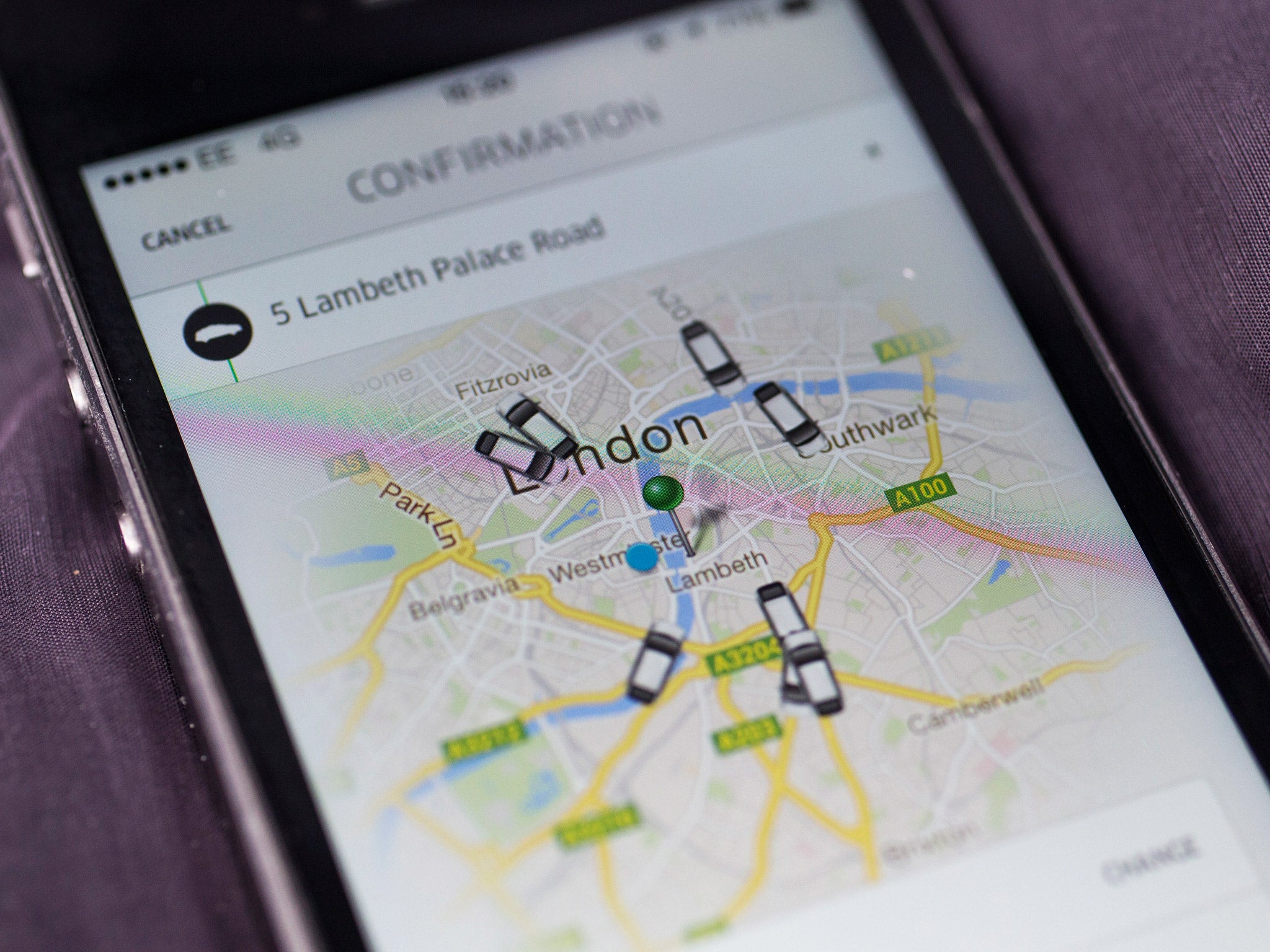Swarm of Uber on-screen taxis often 'phantoms', says investigation
US Uber drivers have claimed that the car service often displays 'phantom cars', which are not actually circling the location, when customers request a journey

Your support helps us to tell the story
From reproductive rights to climate change to Big Tech, The Independent is on the ground when the story is developing. Whether it's investigating the financials of Elon Musk's pro-Trump PAC or producing our latest documentary, 'The A Word', which shines a light on the American women fighting for reproductive rights, we know how important it is to parse out the facts from the messaging.
At such a critical moment in US history, we need reporters on the ground. Your donation allows us to keep sending journalists to speak to both sides of the story.
The Independent is trusted by Americans across the entire political spectrum. And unlike many other quality news outlets, we choose not to lock Americans out of our reporting and analysis with paywalls. We believe quality journalism should be available to everyone, paid for by those who can afford it.
Your support makes all the difference.A swarm of vehicles apparently circling your location is intended to act as an incentive to book an Uber car. But the little black on-screen symbols are sometimes “phantoms” that bear little relation to actual Uber drivers in the vicinity, an investigation into the $50bn company has alleged.
Uber drivers in the US have claimed that the smartphone-based car service often displays “phantom cars”, which are not actually circling the location, when customers request a journey, according to research.
However, the allegation that the app displays a “visual representation” rather than the real-time position of cars in the proximity was categorically denied by Uber’s UK office.
Research from Alex Rosenblat, a New York-based data researcher who studied how Uber drivers interact with the Uber app, alleges that Uber customers are manipulated by the symbols on their screens.
“If a potential passenger opened up the app and saw no cars around, she might take another cab service. But if she saw a cluster of cars seemingly milling around on the same street, she’s more likely to request a ride,” wrote Mr Rosenblat, whose research – funded by Microsoft – is published on Vice magazine’s Motherboard blog.
“What the passenger app shows can be deceptive,” writes Mr Rosenblat, who found that Uber drivers “across multiple forums discuss the fake cars they see on their own residential streets”.
He quoted Heather, an Uber driver, who once opened the passenger app to find four drivers on the streets immediately by her pick-up location. Her driver app, however, showed that the closest available vehicle appeared to be 17 minutes away, by Uber’s estimate.
When Heather questioned Uber about the discrepancy, she was told the app merely displayed a “screen saver”. “The app is simply showing there are partners on the road at the time,” a company representative told her in an email.
But a UK spokesman for Uber said: “This is simply not true. The cars you see in the app are the cars on the road.”
Join our commenting forum
Join thought-provoking conversations, follow other Independent readers and see their replies
Comments